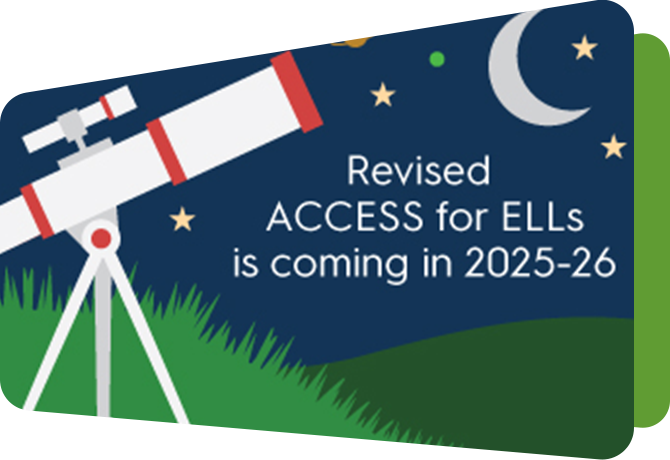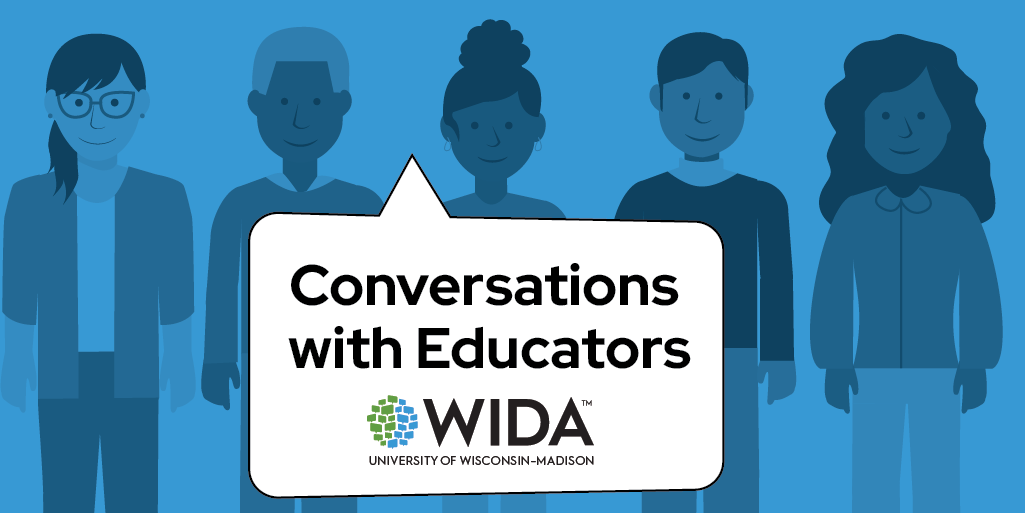This WIDA Snapshot introduces argumentar, the fourth Key Language Use of the Marco de los estándares del desarrollo auténtico del lenguaje español de WIDA (Marco DALE), WIDA’s Spanish language development framework. Argumentar helps students develop the language necessary for critical thinking, evidence-based discourse and reasoning. This is the last in a four-part series of WIDA Snapshots on the Key Language Uses of the Marco DALE: relatar, informar, explicar and argumentar.
The Marco de los estándares del desarrollo auténtico del lenguaje español de WIDA (Marco DALE) adopts the Key Language Uses from the WIDA English Language Development Standards Framework, 2020 Edition, as the organizing component that connects linguistic development with academic learning. Among the Key Language Uses identified in the Marco DALE, argumentar (in English, argue) serves an essential role in constructing and defending ideas based on evidence and reasoning. By developing this ability, students learn to justify their positions, form persuasive arguments and respond in a structured way to different perspectives.
What Is Argumentar?
The Key Language Use argumentar is critical in academic and social contexts as it allows students to defend ideas, influence an audience's point of view and promote informed action. In the classroom, argumentar is applicable in various content areas. Below are some examples of how students may engage with this Key Language Use.
- In a science class, students may argue about the need for policies to reduce carbon emissions, using scientific data as evidence to support their claims.
- In a history or social studies class, students may debate the effectiveness of a public policy while considering opposing perspectives to strengthen their position.
- In a language arts class, students may analyze a character's behavior and defend their interpretation based on the source text.
Argumentar not only involves expressing an opinion, but also requires the development of language and critical skills to structure logical discourse, evaluate relevant information thoroughly and communicate ideas convincingly.
How Can Argumentar Be Integrated Into Practice?
When students engage with argumentar, they develop the skills and language necessary for critical thinking and for constructing evidence-based discourse and reasoning. To aid in this development, educators can provide examples of the language used to formulate and defend strong arguments. Teaching students the characteristics of an effective argument, such as the use of evidence to support claims, guides them to use relevant data, quotes and examples to justify their positions. It is also important to include examples of strategic counterarguments to help students anticipate and respond to opposing views, thereby strengthening their argumentation and analytical skills.
Another important practice to consider when supporting students’ skills in argumentar is audience awareness. This allows students to adapt their language according to the context they are in and the people they are addressing. To do this, educators may design exercises in which students practice structuring arguments in different formats, such as a formal academic essay or a persuasive speech addressed to their classmates. To further strengthen students’ oral communication skills, active listening and respect for diverse perspectives, educators may provide opportunities for structured debates in which students present, defend and challenge ideas. In addition, the use of graphic organizers, evaluation rubrics and argumentative model analysis allows students to progressively improve the quality of their arguments, promoting deep and meaningful learning.
How Does Argumentar Relate to Other Key Language Uses?
Argumentar is complemented by the other Key Language Uses of the Marco DALE to enrich the construction and communication of ideas in different contexts. Informar (in English, inform) is essential to development of a strong argument and allows students to support their claims and provide credibility with factual information. In addition, argumentation often incorporates explicar (in English, explain) to further develop the reasoning behind a statement. Explicar allows students to clarify why a position is valid or how a proposed solution works, providing greater strength and coherence to an argument. Relatar (in English, narrate) can also be a powerful tool within argumentation, as stories and narratives allow students to contextualize an argument, capture the audience's attention and illustrate a key point with concrete examples. For example, a student arguing for the use of renewable energy can report scientific data on the environmental benefits of reducing dependence on fossil fuels, explain how solar panels work and their impact on energy efficiency, and finally relate a personal experience about energy savings in her home, demonstrating the positive effects of renewable energy in everyday life. By integrating argumentar with the three other Key Language Uses, students strengthen their reasoning and are better equipped to construct clear, effective arguments.
How Does Argumentar Relate to Language Expectations?
Language Expectations (las expectativas del lenguaje) establish goals for learning based in curricular content. In the Marco DALE, Language Expectations are presented for the three modes of communication (interpretive, interactive and expressive) and organized by Key Language Use. The Language Expectations for argumentar guide students in constructing strong arguments. In the interpretive mode, students analyze arguments in texts, identifying claims, evidence and counterarguments. In the interactive mode, they engage in debates and discussions, defending their positions and responding to opposing perspectives. In the expressive mode, students write argumentative essays, persuasive speeches and structured responses based on evidence, thus strengthening their argumentation capacity in different academic and social contexts.
Language Functions (las funciones del lenguaje) are common patterns of language use that showcase particular ways students might use language to meet the purposes of schooling. The Language Functions for argumentar reflect ways in which students can organize and express their ideas logically to construct effective arguments; for example, by including clear statements that define a position or perspective; providing relevant evidence, such as data, quotes, or examples; and incorporating counterarguments, anticipating possible objections and refuting them with solid reasoning that demonstrates critical analysis.
Language Features (los recursos lingüísticos) are examples of various characteristics of language that language users rely on to carry out particular Language Functions (e.g., types of sentences, clauses, phrases and words). In argumentar, students can employ a variety of Language Features to construct strong and persuasive arguments. Logical connectors (e.g., as, therefore, however, consequently) enhance the coherence of a text or speech and help to articulate relationships between ideas. The use of complex sentences (e.g., "Although some people argue that carbon taxes are expensive, their implementation has been shown to significantly reduce emissions") helps to nuance claims and consider different perspectives within an argument. On the other hand, adjusting tone, with expressions such as "It could be argued that ... " or "According to the evidence, it is possible to conclude that ... " reinforces the credibility of an argument and gives greater precision to the included statements. Mastery of these Language Features allows students to fully engage with argumentar in different academic and social contexts.





